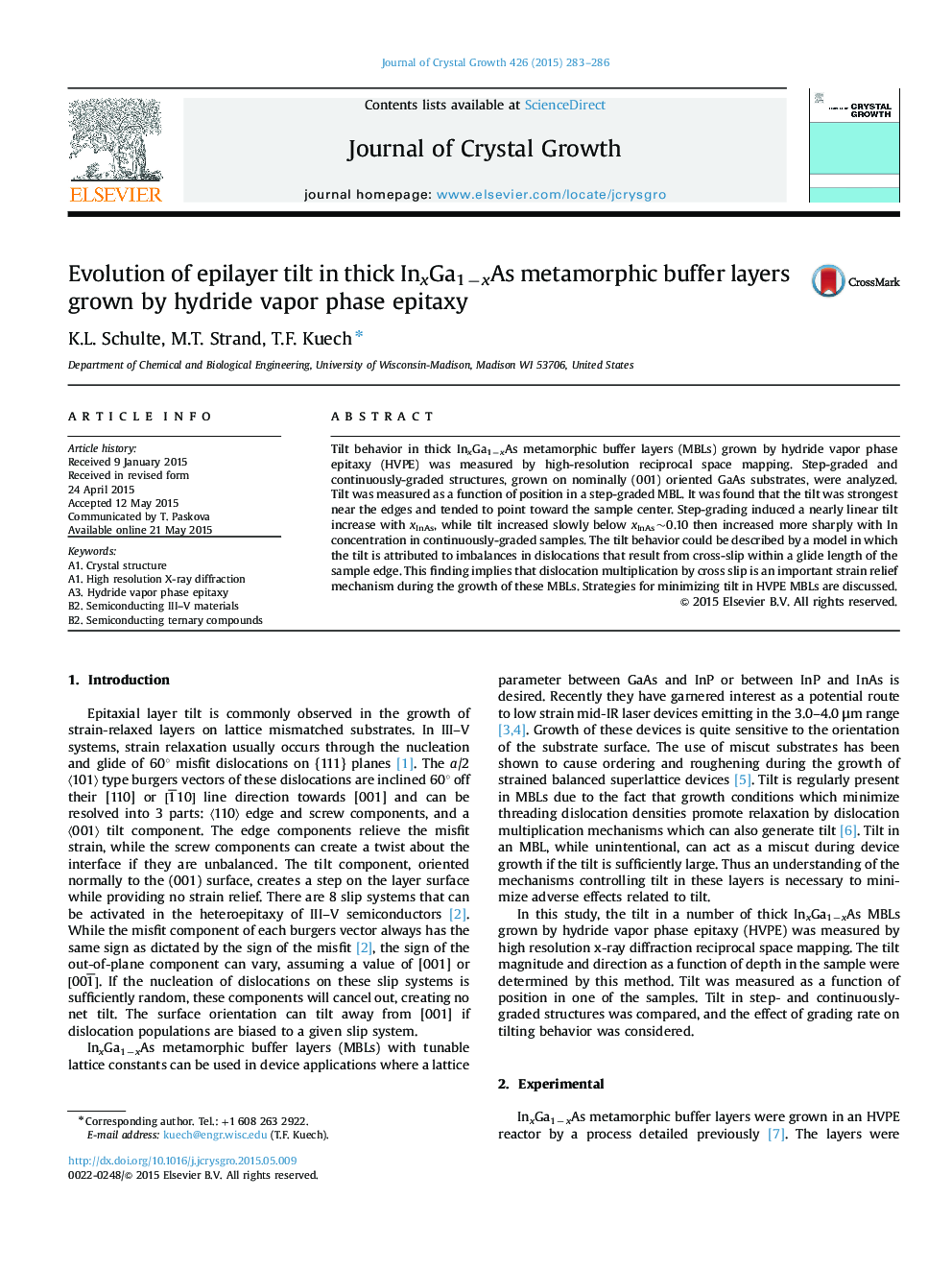| Article ID | Journal | Published Year | Pages | File Type |
|---|---|---|---|---|
| 1789896 | Journal of Crystal Growth | 2015 | 4 Pages |
•We measured layer tilt in HVPE-grown InGaAs MBLs as a function of growth parameters.•Tilt was strongest near the edges of the samples.•Tilt increased steadily with xInAs under both step- and continous-grading.•An increased grading rate led to an increase in tilt generation.•The tilt behavior was attributed to dislocation multiplication by a cross-slip mechanism.
Tilt behavior in thick InxGa1−xAs metamorphic buffer layers (MBLs) grown by hydride vapor phase epitaxy (HVPE) was measured by high-resolution reciprocal space mapping. Step-graded and continuously-graded structures, grown on nominally (001) oriented GaAs substrates, were analyzed. Tilt was measured as a function of position in a step-graded MBL. It was found that the tilt was strongest near the edges and tended to point toward the sample center. Step-grading induced a nearly linear tilt increase with xInAs, while tilt increased slowly below xInAs~0.10 then increased more sharply with In concentration in continuously-graded samples. The tilt behavior could be described by a model in which the tilt is attributed to imbalances in dislocations that result from cross-slip within a glide length of the sample edge. This finding implies that dislocation multiplication by cross slip is an important strain relief mechanism during the growth of these MBLs. Strategies for minimizing tilt in HVPE MBLs are discussed.
